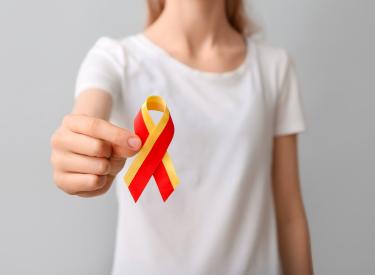
Scare Tactics Won't Work for Drug Prevention. Here's Why.
The state of Arizona recently debuted a new $400,000 ad campaign that takes a “horror movie” approach to drug prevention.
That’s according to Dr. Cara Christ, the director of Arizona’s Department of Health Services. She told the Arizona Republic that the department’s new ad campaign directed at teens "had to be graphic, and it had to show the law enforcement consequences of opioids."
Scare tactics for drug prevention are nothing new. From “Reefer Madness” in the 1930s to ”Just Say No” and fried egg metaphors in the 1980s, the United States has a long history of relying on dramatic PSAs to deter drug use.
Some research suggests that fear-based messaging can motivate certain kinds of low-stakes behavior changes, like seeing the dentist more regularly. But when it comes to preventing teens from using alcohol and other drugs, the evidence is clear: Scare tactics don’t work.
Why? Research offers several key insights.
“Horror” scenarios make teens tune out
A violently smashed egg, a car wreck, the explicit portrayal of drug withdrawal —these images don’t influence future behavior among teens. And after a while, teens will start to tune these types of messages out.
Research shows that teens are likely to ignore or dismiss an ad’s scary message due to:
- repeated exposure (hearing the same message over and over again)
- redundancy of information (hammering home vague ideas that teens already generally understand, like “opioids are dangerous”)
- dramatic exaggeration (portraying the most extreme cases, like car crashes and lifetime jail sentences)
Even if a scary ad does evoke a strong emotional reaction, research shows that teens still don’t modify their behavior accordingly. They rarely make the connection between the ad’s message and their own personal circumstances.
Scare tactic ads also don’t address teenagers’ perceptions of the benefits of substance use. Pressure to fit in, the desire to relax after finals or to forget unpleasant emotions—these are all reasons why kids might want to try alcohol or other drugs. When anti-drug messages fail to engage with these realities, teens will tune them out.
In fact, scare tactics can trigger the behaviors they are meant to prevent
If a scary ad makes someone with a substance use disorder feel bad about themselves, they may turn to drugs to self-medicate. If a scary ad makes someone with addiction feel judged or alienated, they are all the more likely to hide their illness and not seek help.
What’s more, drug use scare tactics can trigger fear and panic in the loved ones of people with substance use disorders—without offering any solutions or help.
Instead of scare tactics, public awareness campaigns should focus on these three things:
Positive emotions
Instead of focusing on doom and gloom, show love and support. Make your audience laugh. Research has found that using positive emotions to engage all people, including teenagers, is a more effective way to promote positive health behaviors.
Healthy social norms
Among teens, peer pressure is nurtured by a fuzzy sense that “everybody’s doing it.” Messages which bust that myth (i.e., “Did you know that 70% of the kids at this school don’t drink alcohol?”) empower teens to feel good about their healthy choices, and draw attention to the positive instead of zeroing in on the negative.
A justice-minded spin
The Truth Initiative’s anti-tobacco campaign was so effective because it appealed to teens’ sense of right and wrong—and their natural instinct to rebel. By reducing cigarette smoking to an unattractive hobby that enriches corrupt billionaires, the Truth had a lasting effect on teen tobacco use. New public awareness campaigns about drugs and addiction should keep this approach in mind. (And some do!)
Originally published in 2019.




